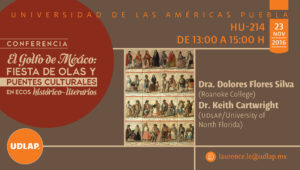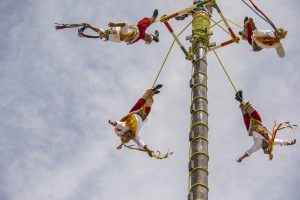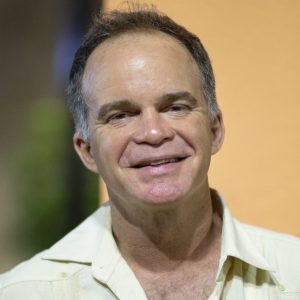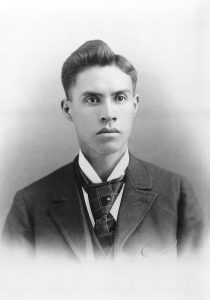What do we see, fear, or come to understand about ourselves and each other when we face things from the Gulf, from gulfs between us?
¿Qué podemos descubrir, tener o entender de nosotros mismos y de los demás cuando nos enfrentamos a las posibilidades en el Golfo y a los golfos que creamos entre nosotros y nos separan?
Mexico and Our Gulf Shores
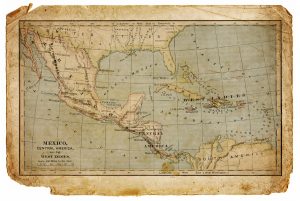
“The Gulf of Mexico is a matrix of biodiversity, cross-cultural histories and futures, deep hauntings and shifting frontiers. Its shores form a North American ground zero. Whether in looking at maize agriculture or the rise of plantation systems, or in tending to Carnival or Days of the Dead, we seek acknowledgement and understanding of gulfs between us — across the region and beyond. We draw from our differing areas of research and from the places we call home (from Veracruz to Florida, Yucatan to Louisiana) as we traverse Gulf shorelines and Rio Grande borders in an ongoing book, through documentary films, via public lectures, and in collaborations with dynamic artists and activists.”
El Golfo de México es la matriz de donde surgen diferentes componentes que lo hacen una región geográfica única. Sus aguas dan hogar a una biodiversidad sin igual, a historias y futuros interculturales. Nuestro trabajo colaborativo tiene el propósito de dar a conocer lo poco celebrado de la grandeza del Golfo. Unimos nuestras diferentes áreas de estudio y lo común de nuestros lugares de origen y recíproco interés (Veracruz, Florida, Yucatán y Luisiana), para atravesar las costas del Golfo y las fronteras del rio Bravo a través de la escritura, de documentales y colaboraciones con artistas que con sus obras crean un activismo dinámico y pacífico.
“Gulf Gothic dives into deep time and leaps the border walls of nation-states and national literatures alike. Dolores Flores-Silva and Keith Cartwright — leading scholars of Latin American/Mexican and US southern/African diasporic literatures, respectively — are our expert guides to how ‘the shores of the Gulf of Mexico’ come together as a ‘cross-cultural ground zero’. Flores-Silva and Cartwright focus particularly on variations of the ‘gulf gothic’. Moving beyond discreet models of ‘southern gothic’ and ‘tropical gothic’, their gulf gothic ranges from indigenous tales of La Llorona, via the plantation racial dramas of Faulkner and Fuentes, to the twenty-first century huracán novels of Fernanda Melchor and Jesmyn Ward. A compact, provocative, and genuinely comparative — as well as connective — study.”
— Martyn Bone, University of Copenhagen, on Gulf Gothic: Mexico, the U.S. South, and La Llorona’s Undead Voices (London: Anthem Press, 2023)
In screening the documentary ...Kookayen ku k’a’ajsik u chiich Dolores Flores-Silva, on behalf of her colleagues, commented that it has been a work with a simple purpose: to contribute to the Maya tongue's lasting life. The poets all agree that making poetry in Maya is itself a form of resistance.
— Itzel Chan, La Jornada Maya, 1 Julio, 2021
“...los investigadores Dolores Flores Silva y Keith Cartwright tocan aspectos relacionados con el racismo... recuperan representaciones plásticas y literarias del antiesclavista Yanga, figura emblemática de la identidad afroamericana no reconocida.”
— editorial, La Palabra y el Hombre: Revista de la Universidad Veracruzana, 53 (2020)
“The goal of screening this kind of documentary is to create a participative, critical, and informed audience, opening new channels of expression and reflection in our city. El grito de Yanga is a profound examination... of our black identity.”
— Melitón Reyes Larios, Mayor of Ciudad Mendoza, Veracruz,
quoted in El Vigilante Veracruzana
after a screening of Yanga’s Freedom Cry (January 14, 2019)
“Keith Cartwright and Dolores Flores-Silva demonstrate powerfully the ways that the South has always been global, circum-Caribbean, and Indigenous in nature. Their collaboration as editors and filmmakers showcases the voices and images that unveil Souths we have yet to see or imagine, either geographically, temporally, or imaginatively.”
— Eric Gary Anderson and Melanie Benson Taylor,
“Why Native Southern Literatures Matter”
Native South, Volume 12 (2019)
“Flores-Silva and Cartwright explore ideological figures of what lies south of the US as expressions of a psychically and politically repressed space, a contrapuntal and inexhaustible one that refuses to submit to such repression.... Noting that cultural historians have contributed many bricks to ‘ideological border walls,’ their positing of the culture of barbacoa as a transnational bridge makes a timely intervention into the regionalization of American Studies in the Trump era.”
— Aaron Nyerges and Thomas Adams,
Australasian Journal of American Studies (2017)
 Anthem Press, 2023
Anthem Press, 2023
Purchase on Amazon
Read more about the book
Dolores Flores-Silva, from the Mexican Gulf state of Veracruz, is professor of Latin American literature and culture at Roanoke College. Co-author of The Cross and the Sword in the Works of Rosario Ferré and Mayra Montero (2009), she has written on Mexican and Hispano-Caribbean literatures and cultures, Chicano Studies, and the U.S. South.
Keith Cartwright is chair and professor of English at the University of North Florida and has served as the Fulbright–García Robles U.S. Studies Chair at Universidad de las Américas Puebla.
Our project together began with discussions of Roanoke College students from Veracruz and from Choctaw Nation who became the College’s first international/non-Anglo students during the 1870s – 1880s. Our ongoing collaborative research continues to be moved by questions about their interactions and the gulfs between us.


